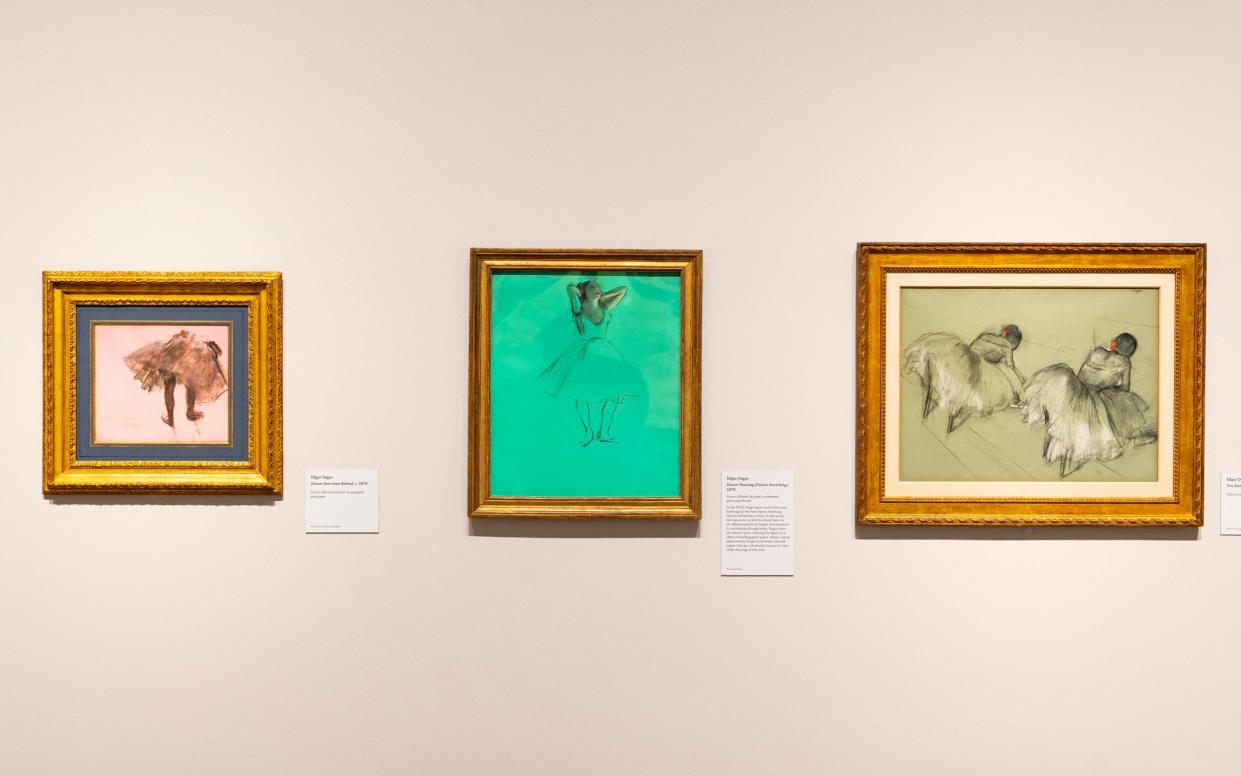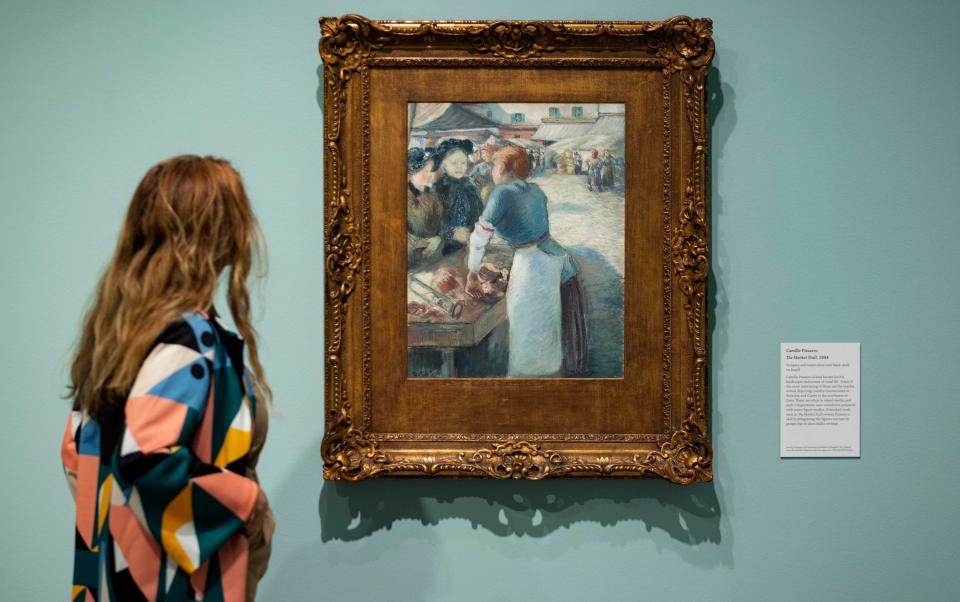Impressionists on Paper, Royal Academy: full of delicious little surprises

Impressionism – at the Royal Academy? Again? Yawn! Yet, while you might assume that this new exhibition at Burlington Gardens would, through overfamiliarity, induce narcolepsy, such concerns prove unfounded.
Curated, with Ann Dumas, by a former Surveyor of the Queen’s Pictures, Christopher Lloyd (who contributes to the catalogue an essay of remarkable historical scope), Impressionists on Paper presents a neat, clear argument: that, during the late 19th century, the status of works of paper, hitherto considered mostly as “preparatory”, improved; and, as they gained autonomy, they came to be viewed on a par, almost, with paintings.
A suite of large galleries is filled with delicious little surprises, including, most bizarrely, an unsettling (and off-message) charcoal drawing, by the French Symbolist Odilon Redon, of two human-headed flowers sprouting surreally from a vase, and a view of a roadside patch of thistles by Vincent van Gogh that, with all its dots and dashes, could be transcribed easily into Morse code.
I doubt that even the RA’s audience will be familiar with some of the lesser-known, yet wonderfully frilly, names, such as Hippolyte Petitjean or Federico Zandomeneghi – but this isn’t to say that the featured artists are second-tier, since almost all Impressionism’s protagonists (bar Gustave Caillebotte), as well as many of the biggest talents who followed, are represented.
For instance, there are dancers – lots of dancers – by Edgar Degas: resting, yawning, adjusting ribbons, limbering up; each lithe, quivering form, always delineated with economy and command, usually offset by a bravura flourish representing a flouncy tutu. Elsewhere, a watercolour by Paul Cezanne of flowerpots roasting on a Provencal terrace seemingly shimmers with hazy heat. Moreover, I will be forever indebted to this show for turning me on, finally, to Camille Pissarro, about whose work (which, hitherto, compared with that of his peers, has often struck me as drab) I’ve been so rude. Sorry, Camille: I take it all back.
The exhibition begins not, as you might expect, with a scene of metropolitan hustle-and-bustle (although a sketch by Edouard Manet of a rain-slickened Parisian “rue”, filled with careening carriages and passers-by hunched beneath umbrellas, appears on an adjoining wall), but a pastel, by Eugene Boudin, of a sunset over the sea, as colourful and stripy as a stick of rock. It ushers in a miniseries of unpopulated pastel landscapes and sky studies, and announces how the show will proceed – by smartly grouping together related works.

Occasionally, there is a pick-and-mix quality to the selection, which is hung uniformly on the line, and – beset with fusty, miscellaneous frames – at first feels old-fashioned. Yet, things are never monotonous, thanks, in part, to the variety of mediums on display – including sanguine (red chalk), in a piece by Pierre-Auguste Renoir evoking the glories of 18th-century French art, and sumptuous black Conte crayon, deployed by Georges Seurat to (paradoxically) scintillating tenebrous effect.
Is there, within this three-act drama of drawing, a hero – or heroine (since women artists, such as Mary Cassatt and Berthe Morisot, are prominently included, too)? I’d say: if you know of an artist with a more refined touch than that of Degas, who, while always proclaiming art’s artifice, excelled at depicting unexpected, un-idealised moments with supreme, deft elegance, do let me know.
From Nov 25 until March 10; information: royalacademy.org.uk


